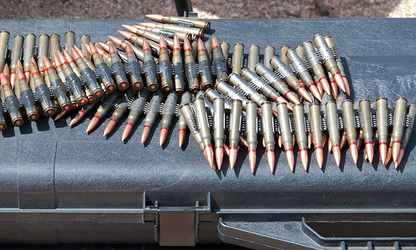Hot on the heels of a Congressional report declaring that 70% of firearms recovered at crime scenes in Mexico originated in the United States comes accusations that the Bureau of Alcohol, Tobacco, and Firearms (ATF) allowed up to 2,000 guns to “walk” to Mexico between 2009 and 2011.
In a controversial program called Operation Fast and Furious, ATF agents were instructed to allow straw purchasers to walk away with small fortunes in firearms. Ostensibly, these purchasers could then be linked to drug cartels, giving the ATF insight into trafficking patterns and allowing them to focus on higher-value targets. This would, of course, require a drug cartel-linked crime to occur in order for Mexican authorities to find a gun that could then be traced back to the Fast and Furious entries in the ATF’s Suspect Gun Database.
In practice, the program rolled up 20 straw purchasers – a truly unimpressive achievement – while fueling Mexico’s increasingly violent drug war with AK-47 variants, Barrett .50-cal sniper rifles, and FN Five-SeveN pistols. Yet ATF leadership seemed wholly unconcerned with the possibility of loss of life in connection to Fast and Furious. In a March 2010 email, the supervising agent for Fast and Furious David Voth wrote, “… [W]e are all adults, we are all professionals, and we have a [sic] exciting opportunity to use the biggest tool in our law enforcement tool box. If you don’t think this is fun you’re in the wrong line of work – period!”
Indeed, it was only after two guns linked to Fast and Furious were found at the scene of the murder of Border Patrol agent Brian A. Terry in December 2010 that whistleblowers were able to gain an audience for their concerns. Attorney General Eric Holder has asked for an investigation into the operation, the legality of which seems to have hinged on a loose reading of a 1989 ATF order that stated “immediate intervention may not be needed or desirable, and the special agent may choose to allow the transfer of firearms to take place in order to further an investigation.” While senior ATF management took this as license to drop surveillance of weapons, this went against standard ATF training and protocol, which requires agents to “follow the gun.”
Misguided interpretation or not, nothing can disguise the fact that top leadership knew about and at minimum gave tacit approval of Operation Fast and Furious, despite the near inevitability that these guns would be used in violent crimes. In most firearms cases, once the gun is out of sight, it is almost impossible to recover until it is abandoned – which is often at a crime scene. While estimates vary of the number of guns that were knowingly – and illegally – trafficked to Mexico under this program, what is almost certain is that these guns will turn up at future crime scenes. While the ATF has complained for years of being underfunded and understaffed, that excuse could only serve as a defense for accidentally losing these guns. Nothing excuses the negligence of intentionally allowing firearms to leave their sight.
We often don’t look at drug related violence in Mexico through a UN lens, but it is a concern for the entire region. American guns in Mexico are already causing terrible problems. That the ATF would knowingly add fuel to this fire is deeply problematic.
